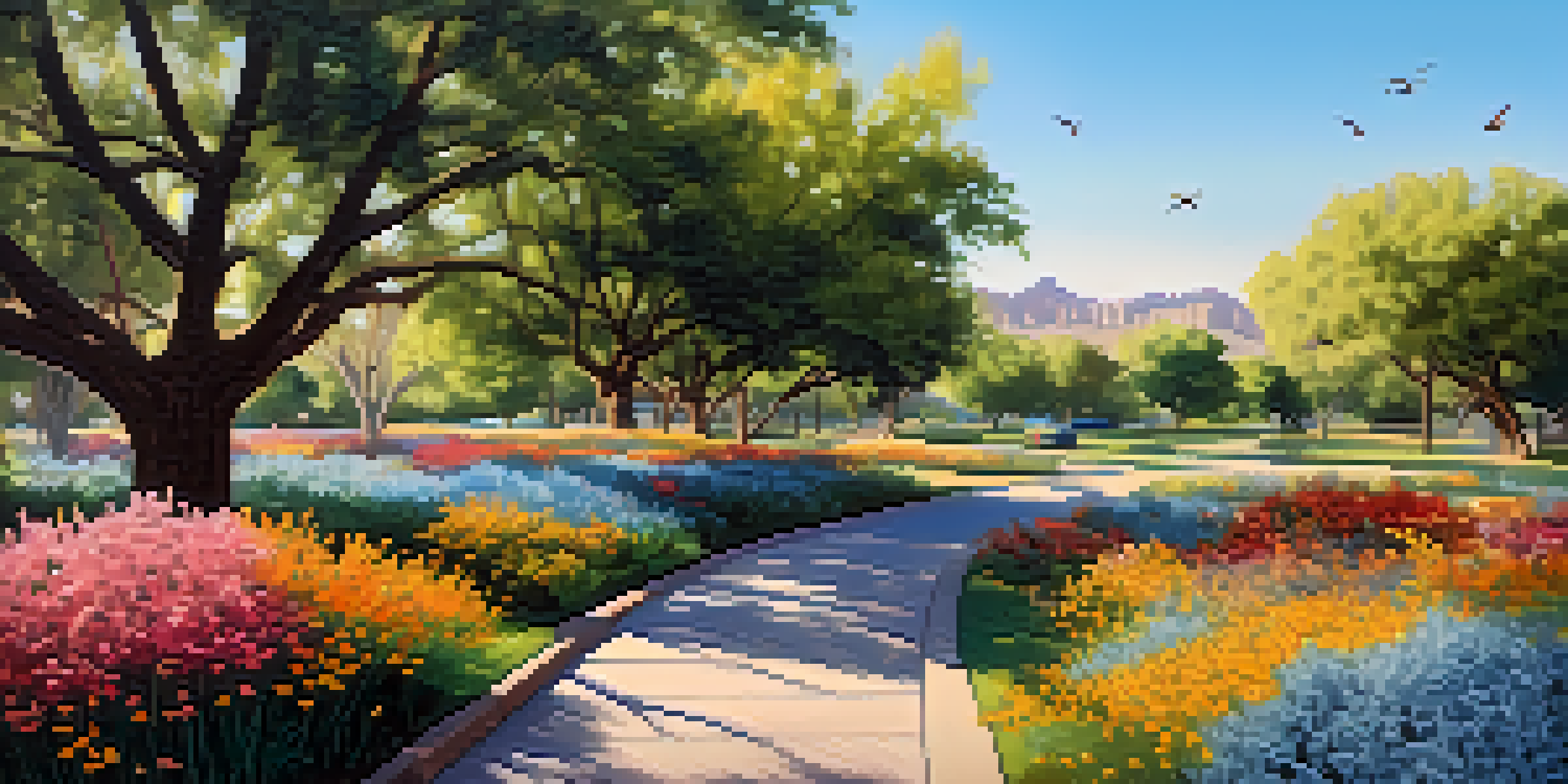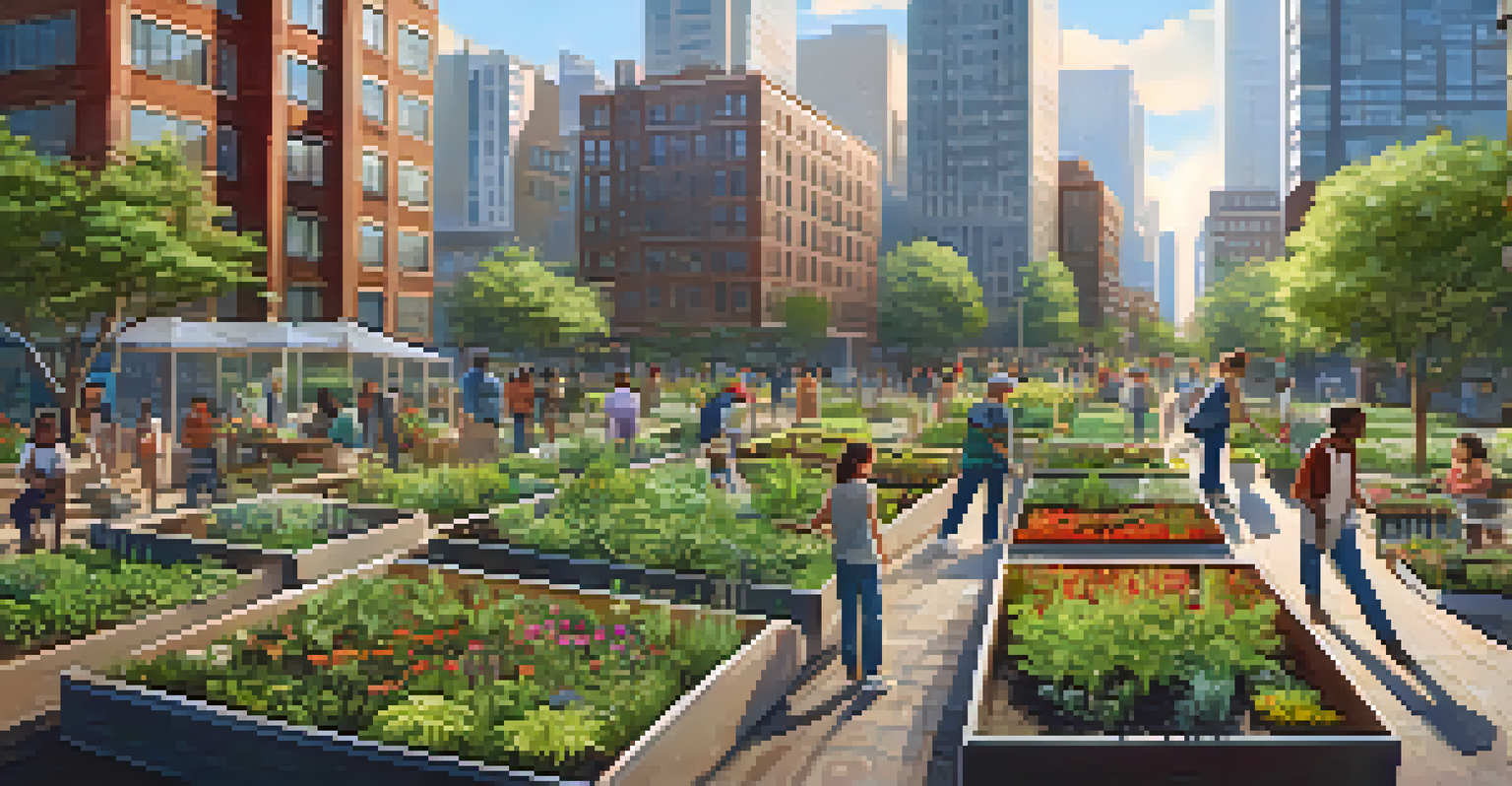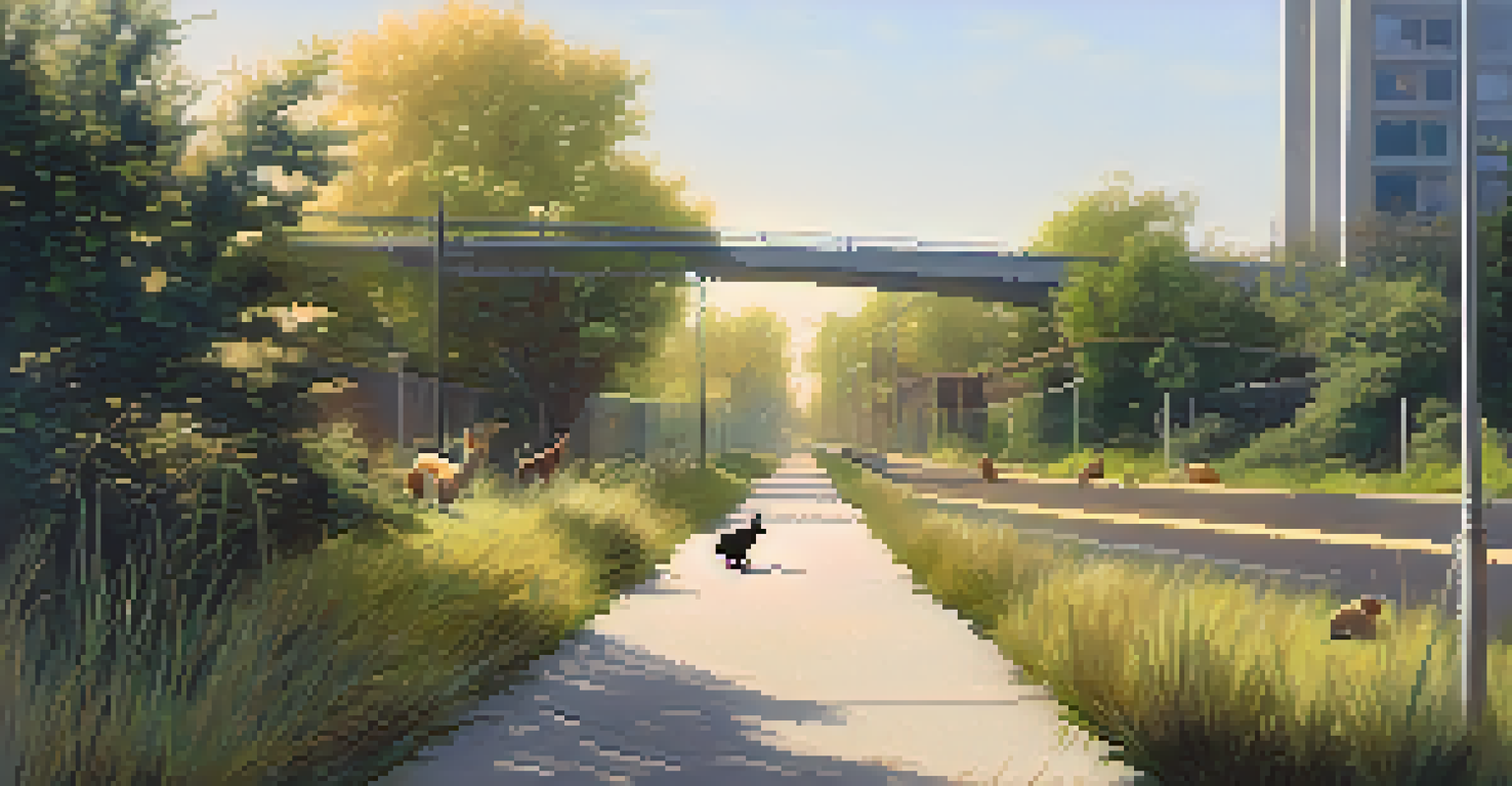The Role of Green Spaces in Urban Areas for Wildlife in AZ

Understanding Urban Green Spaces and Their Importance
Urban green spaces are areas like parks, gardens, and nature reserves nestled within cities. They play a vital role in enhancing the quality of urban life by providing recreational areas for residents and habitats for wildlife. In Arizona, these green patches are essential, especially in the arid climate, where natural habitats are often limited.
The clearest way into the Universe is through a forest wilderness.
These spaces not only serve as a refuge for various animal species but also help in maintaining ecological balance. They allow wildlife to thrive amidst bustling cities, creating a unique blend of urban and natural environments. For example, a park can become a sanctuary for birds, insects, and small mammals, all of which contribute to the local ecosystem.
Moreover, urban green spaces can mitigate the heat island effect that is prevalent in desert cities like Phoenix. By promoting biodiversity and offering cooling areas, they help improve the overall urban climate while supporting wildlife populations that may struggle in harsher conditions.
The Benefits of Green Spaces for Local Wildlife
Green spaces provide essential resources for wildlife, including food, water, and shelter. For instance, flowering plants attract pollinators such as bees and butterflies, which are crucial for plant reproduction and ecosystem health. Similarly, trees and shrubs offer nesting sites and protection from predators, making these areas invaluable for local fauna.

In Arizona, many species have adapted to urban life, with green spaces serving as critical corridors for movement and breeding. For example, small mammals like rabbits and rodents rely on these areas to find food and avoid urban threats. This connection to nature fosters a richer biodiversity, which is vital for a balanced ecosystem.
Urban Green Spaces Enhance Life
Urban green spaces like parks and gardens improve residents' quality of life while supporting local wildlife.
Additionally, urban wildlife contributes to the vibrancy of city life. Seeing a hawk soar overhead or listening to the chirping of crickets can enhance residents' connection to nature, leading to greater appreciation and conservation efforts. This interaction between urban dwellers and wildlife creates a sense of community and environmental stewardship.
How Urban Planning Affects Wildlife Accessibility
Urban planning plays a significant role in determining the availability and quality of green spaces. Well-designed cities incorporate parks and natural areas that are easily accessible to both residents and wildlife. In Arizona, thoughtful urban planning can facilitate connectivity between these spaces, allowing wildlife to navigate through urban landscapes effectively.
Nature does not hurry, yet everything is accomplished.
For example, creating green corridors or wildlife bridges can help animals cross busy roads, reducing the risk of accidents. These strategic designs not only enhance safety for animals but also promote biodiversity by connecting isolated habitats. When wildlife can move freely, they are more likely to thrive and maintain healthy populations.
Conversely, poorly planned urban developments can fragment habitats, isolating wildlife and leading to population declines. It's essential for city planners to consider the ecological implications of their designs, ensuring that green spaces remain viable for wildlife. This balance benefits both the environment and the community, fostering a harmonious coexistence.
Promoting Native Plants in Urban Green Spaces
Native plants are crucial for supporting local wildlife, as they are well-adapted to the region's climate and soil. In Arizona, incorporating native flora into urban green spaces can provide food and habitat for various species. For instance, desert wildflowers attract pollinators, while native shrubs offer shelter for small birds and mammals.
By prioritizing native plants in landscaping efforts, cities can create more sustainable ecosystems. These plants require less water and maintenance, making them ideal for Arizona's dry climate. Additionally, they can help restore local ecosystems, benefiting not only wildlife but also enhancing the beauty and resilience of urban areas.
Community Engagement Drives Conservation
Active participation in conservation efforts fosters a sense of ownership and strengthens community bonds.
Community involvement in planting and maintaining native gardens can further strengthen the connection between residents and their environment. Workshops and educational programs can encourage citizens to cultivate their own native plants, fostering a sense of pride and responsibility for local wildlife. This grassroots approach contributes to a healthier urban ecosystem.
The Role of Community Engagement in Wildlife Conservation
Community engagement is vital in promoting wildlife conservation within urban areas. Residents can play an active role in protecting and enhancing green spaces by participating in local conservation efforts. Initiatives such as clean-up days or biodiversity surveys can foster a sense of ownership and encourage people to appreciate the wildlife around them.
In Arizona, community-led projects can significantly impact the health of urban ecosystems. By collaborating with local organizations, residents can contribute to habitat restoration and the establishment of new green spaces. These collective efforts not only benefit wildlife but also create stronger community bonds and enhance the overall quality of life.
Moreover, educational programs can raise awareness about the importance of wildlife conservation. Workshops on creating backyard habitats or understanding local species can empower residents to make informed choices that support biodiversity. When communities are engaged and informed, they become powerful allies in the fight for urban wildlife preservation.
Challenges Facing Urban Wildlife in Arizona
Despite the benefits of green spaces, urban wildlife in Arizona faces several challenges. Habitat loss due to urban development can lead to declining populations and even local extinctions. As cities expand, available green spaces may shrink, making it difficult for wildlife to find food and shelter.
Additionally, pollution from urban areas can adversely affect wildlife health and behavior. Pesticides, litter, and noise pollution can disrupt natural habitats, making them inhospitable for many species. For instance, water runoff from streets can contaminate local water sources, impacting aquatic life and the animals that depend on these ecosystems.
Challenges for Urban Wildlife Persist
Urban development, pollution, and human-wildlife conflict pose significant challenges to the survival of wildlife in Arizona.
Another challenge is human-wildlife conflict. As urban areas encroach on natural habitats, interactions between residents and wildlife may increase, often leading to negative outcomes. Educating the public on coexistence strategies can help mitigate these conflicts, ensuring that both urban dwellers and wildlife can thrive in shared spaces.
Future Directions for Urban Green Spaces and Wildlife
Looking ahead, the future of urban green spaces in Arizona will largely depend on innovative design and community involvement. Planning for wildlife-friendly urban environments can create spaces that benefit both people and animals. This may involve incorporating more natural elements into urban designs, such as wildlife corridors and native plant gardens.
Advancements in technology can also play a role in enhancing urban green spaces. Using data from wildlife monitoring can inform planning decisions, ensuring that new developments consider the needs of local species. Apps that allow residents to report wildlife sightings can contribute valuable information to conservation efforts.

Ultimately, fostering a culture of conservation within urban communities will be key to supporting wildlife in Arizona. By prioritizing green spaces and promoting biodiversity, cities can become more resilient and vibrant, benefiting both people and the natural world. Together, we can create a future where urban areas harmoniously coexist with wildlife.